What is dry eye?
Dry eye (also known as dry eye syndrome or dysfunction tear syndrome) is an eye condition caused by many different factors, such as the environment, natural ageing process, and the consumption of certain medications that result in unstable tear production and insufficient lubrication on the front surface of the eye. It is characterized by the reduced tear production or increased evaporation of tears.
Dry eye can be experienced in different environments and situations, such as in an air-conditioned room, on an airplane, or while looking at a digital device screen for extended periods of time (more than 2 hours at one time).
The following sections will briefly outline the public health implications of dry eye, what causes dry eye, its signs and symptoms, and some insights into its management and treatment.
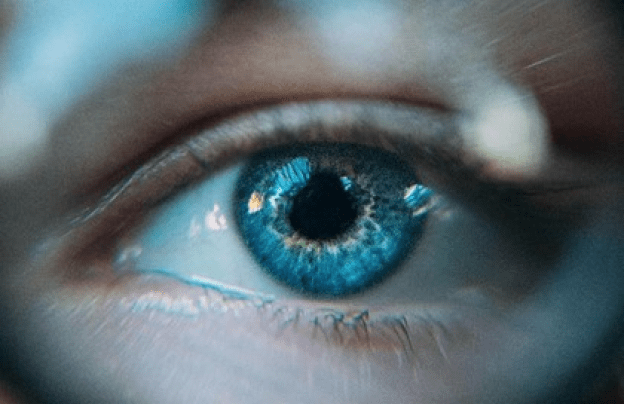
How many people suffer from dry eye?
According to a study conducted in 2017 by the Tear Film and Ocular Society (TFOS) Dry Eye Workshop (DEWS) Epidemiology subcommittee, the proportion of people with dry eye in the world ranges from 5 to 50% depending on the country and age group [1]. The number of people who experience dry eye is known to increase with age regardless of the population.
In some populations such as Japan, China, the United States (US), Spain, Singapore, and South Korea, dry eye has been found to affect more women compared to men. The same 2017 study found that the prevalence of dry eye in men was between 9.8 to 11.5%. In comparison, the prevalence of dry eye was almost 2 times higher in women, ranging between 18.7 to 19.4% [1].
The economic costs of dry eye
A review paper conducted in the US found that treating dry eye costs the US healthcare system US$ 3.84 billion each year [2]. At an individual level, studies have found that in the US, the direct medical cost per person suffering from dry eye can range from US$ 678 to US$ 1,267 each year depending on the severity of the condition [2].
Dry eye can also lead to a lost in productivity among working adults. To demonstrate this, a study conducted in Japan found that work productivity was significantly lower in people with dry eye, with an estimated annual cost of US$ 741 per person due to lost productivity [3]. Furthermore, these costs did not consider the significant negative impact that dry eye has on the affected person’s quality of life, resulting from discomfort in the eye and loss of clear vision.
The different types of dry eye
On the front surface of the eye there is a tear film that helps to keep the eye lubricated, nourished, and healthy. This tear film is found on the cornea, the outer protective layer of the eye. Tear film layers can be further divided into three layers; mucus, water, and oil layers.
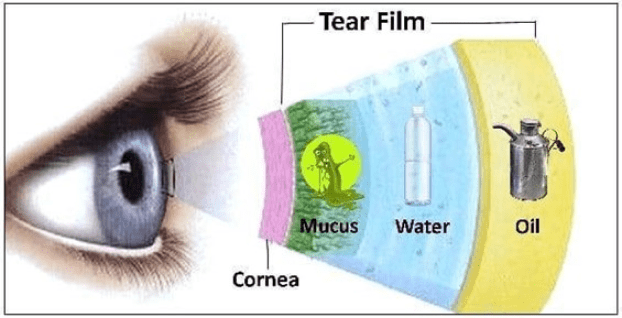
Figure 1. Illustration of the tear film layers on the cornea.
(Source: CarlinVision, 2021)
Dry eye can be classified into the following types based on the lack of tear production, an imbalance in the amount of mucus, water, and oil layers, or a combination of both factors.
Reduced tear production (aqueous-deficient dry eye) [4]
Tears are produced by tear glands (lacrimal glands) located around the eyelids. Aqueous-deficient dry eye occurs when the glands that produce tears are not functioning well, resulting in reduced tear production, which causes dry eye. This malfunction of the tear glands could be caused by ageing, consumption of certain medications, or environmental factors such as prolonged exposure to digital device screens such as mobile phones, tablets or computers, and exposure to second-hand smoke.
Increased tear evaporation (evaporative dry eye) [4]
Evaporative dry eye is associated with an insufficient secretion of the oil layer on the tear film due to a dysfunction of the meibomian glands. These glands are located along the upper and lower eyelids and are responsible for producing and releasing the oil layer on the tear film. The oil layer of the tear film is important to ensure that the water layer does not evaporate too quickly, which may cause the front surface of the eye to become dry in a short amount of time, thereby causing dry eye.
In some cases, there is also a possibility that dry eye may be caused by both reduced tear production and increased tear evaporation. This type of dry eye is known as mixed dry eye.
How does dry eye develop?
The main process that causes dry eye to develop involves an imbalance of the tear film, resulting in reduced tear production and quality.
Studies have found that dry eye may develop as a result of inflammation on the front surface of the eye, causing lesser tears to be produced and the tear film to evaporate faster [4]. The reduced tear production and quality, together with the lack of lubrication and the presence of inflammation on the front surface of the eye, all contribute to the pain that people with dry eye experience.
Reasons that may cause dry eye to develop
Dry eye is a multifactorial disease, which means that a combination of multiple factors may result in the development of dry eye. Some of the reasons that may lead to dry eye include:

Old age
The number of dry eye cases has been found to significantly increase with age due to its association with the natural ageing process, typically starting from the age of 50 years [5]. Both the lacrimal gland and meibomian gland are affected during the natural ageing process and can result in decreased tear production and quality.
Age-related dry eye is also found to be linked to a declining immune system and the presence of chronic diseases, such as diabetes and Parkinson’s disease that are also more common among older people [6].
Hormonal changes in women
Dry eye is found to be more common among women compared to men as a result of hormonal changes in women that reduce tear production. These hormonal changes could be due to pregnancy, menopause, or consumption of oral contraceptives.
Environmental and lifestyle factors
Wearing contact lenses for an extended period of time may cause dry eye. A study conducted on university students in Malaysia found that 40% of contact lens wearers reported symptoms of dry eye after wearing them continuously throughout the day [7].
Other environmental factors that may contribute to the development of dry eye include exposure to second-hand smoke and long hours (more than 2 hours each day) spent engaging in near work activity, such as reading and using digital devices, as well as activities that require the eyes to focus for extended periods of time (for example driving).
Another reported environmental factor that may cause dry eye is climate, particularly climates with low humidity and high wind speeds. Staying in an air-conditioned room for extended periods may also contribute to the development of dry eye.
Medical conditions
People with chronic diseases such as diabetes, thyroid disease, and Parkinson’s disease have a higher risk of developing dry eye compared to those who do not. Other diseases linked to the immune system such as rheumatoid arthritis and Sjögren syndrome have also been associated with dry eye.
Consumption of certain medication
Consuming certain medications such as blood pressure medications, antidepressants, diuretics, and oral contraceptives may cause reduced tear production in some people, which may lead to dry eye.
Eye surgery
Some people who have undergone eye surgeries such as cataract surgery [8] and LASIK (laser-assisted in situ keratomileusis) [9] have been found to develop dry eye symptoms after their surgeries. This is due to the decreased tear production that some people may experience after their eye surgeries and is usually temporary in nature.

What are the common symptoms of dry eye?
• Stinging or burning sensation in the eye
• Blurred vision
• Scratchy or gritty feeling in the eye
• Excessive mucus around the eye
• Red or irritated eyes
• Pain when wearing contact lenses
• Watery eyes due to the irritation caused by dry eye
If you experience any of these signs and symptoms, schedule an appointment with an eye health professional to get your eyes checked. It is also important to note that the development of eye conditions may even start before symptoms appear, which makes going for regular and timely eye checks that much more essential.
How is dry eye diagnosed?
Dry eye is diagnosed through several ways, including the use of questionnaires administered during comprehensive eye checks and tests to check the health of the tear film and to detect certain biomarkers associated with dry eye.
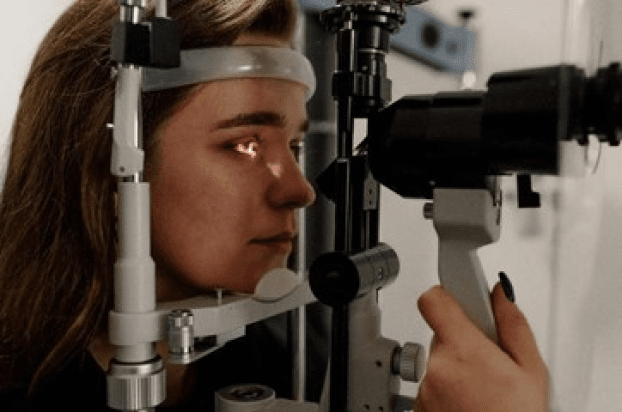
Comprehensive eye checks
If you are experiencing symptoms of dry eye, an eye health professional will conduct a comprehensive eye check to diagnose the condition. The eye check will include a detailed understanding of the patient’s medical history to check for the presence of any autoimmune diseases linked to dry eye.
As part of the comprehensive eye check, the severity of the dry eye symptoms is typically measured using symptom scales. Some of the common types of symptom scales used to diagnose dry eye include the following:
Ocular Surface Disease Index (OSDI) scale [10]
Developed by the Outcomes Research Group at Allergan Inc, the OSDI is a 12-item questionnaire administered during an eye check to determine the severity of the dry eye symptoms. This questionnaire assesses dry eye symptoms and its impact on vision in the past week of the respondent’s life. It includes three subscales: ocular symptoms, vision-related function, and environmental triggers. Responses are rated on a scale of 0 to 4 with 0 corresponding to “none of the time” and 4 corresponding to “all of the time.”
Standardized Patient Evaluation of Eye Dryness (SPEED) scale [10]
The SPEED scale was developed to track the progression of dry eye symptoms over a period of time. It includes 8 items that measure the number of times and severity of dry eye symptoms. These symptoms include dryness, grittiness, scratchiness, irritation, burning, tearing, soreness, and eye fatigue.
Each person will be given a score from 0 to 28 by an eye health professional based on whether the symptoms are not problematic, tolerable, uncomfortable, bothersome, or intolerable. Symptoms are then monitored during the day time for any changes over a period of 3 months following the eye check.
Dry Eye Questionnaire (DEQ-5) [11]
This 5-item questionnaire was developed as an extension from the original Dry Eye Questionnaire (DEQ). The DEQ was designed to diagnose dry eye and to measure its symptoms by assessing 4 main variables: degree of irritation, frequency of irritation, intensity in the morning, and intensity late in the day. The DEQ-5 was later developed to differentiate between groups of patients with different levels of self-assessed severity of dry eye. An overall combined score of more than 6 for the 4 main variables will indicate the presence of dry eye.
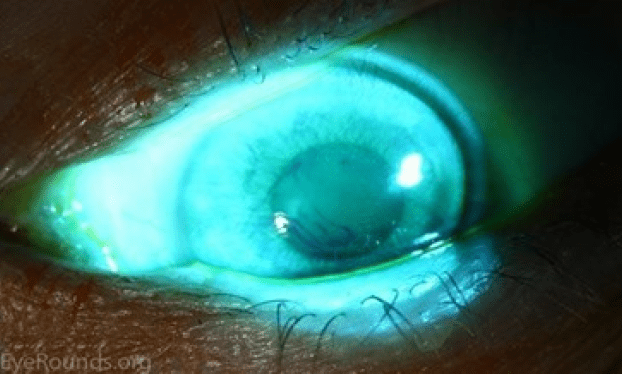
Figure 2. Patient’s eye with fluorescein (Source: eyerounds.org, 2016)
Tear film break-up time test
Another method used to diagnose dry eye is through the tear film break-up time test. This test measures the amount of time needed for tears on the front surface of the eye to break up after blinking. This method is used to assess the stability of the tear film, which is a main factor that contributes to the development of evaporative dry eye.
During the test, the front surface of the eye is stained with fluorescein and is examined using a slit lamp and a blue filter to scan for dry spots on the cornea – the protective outer layer of the eye. A tear film break-up time below 10 seconds is considered as unstable and may indicate the presence of dry eye.
Measuring tear production
Tear production from the tear gland (lacrimal gland) is measured using the Schirmer test. A sterile paper strip is placed at the lower eyelid in contact with the front surface of the eye for 5 minutes to measure the amount of tears being absorbed by the paper strip. A smaller amount of tears absorbed on the paper strip indicates that fewer tears are being produced. If 5 millimetres or less of tears are absorbed on the paper strip, tear production is considered to be low and may indicate the presence of dry eye [12].
Testing tear samples for biomarkers
Matrix metalloproteinase-9 (MMP-9) is an enzyme that is involved in normal bodily functions such as wound healing and bone development. MMP-9 is known to play an important role in the development of diseases such as inflammatory diseases, arthritis, and cancer. Increased levels of MMP-9 have been commonly found in people suffering from dry eye. Therefore, testing for elevated levels of MMP-9 in tear samples may indicate the presence of dry eye [13].
How is dry eye treated?
The treatment of dry eye depends on the severity and type of dry eye – aqueous-deficient, evaporative or mixed dry eye. These treatments aim to allow the eyes to regain or maintain a sufficient amount of tears on the front surface of the eye to minimize dryness and any other related discomfort. Some of the strategies used to treat dry eye include the following:
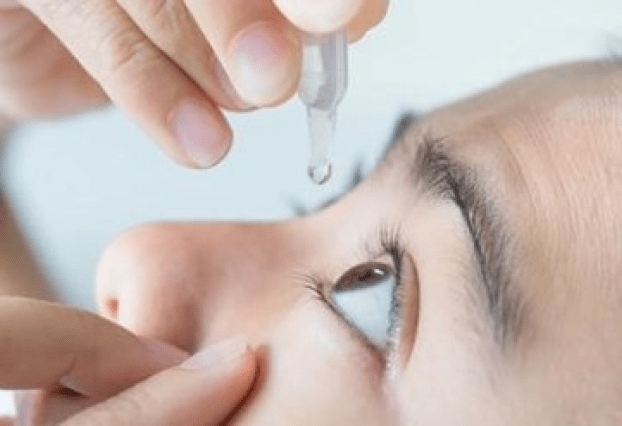
Artificial tears
Mild cases of dry eye can be treated through the use of artificial tear solutions. These artificial tears are administered as eye drops and can be used to supplement the lack of natural tear production commonly observed in people with dry eye.
Retaining tears on the front surface of the eye
Dry eye may be treated by maintaining the tears formed on the surface of the eye to keep it moist. This treatment is administered in a clinical setting by an eye doctor to temporarily or semi-permanently block the tear ducts (puncta) using specially designed plugs made of silicone. Once inserted, these plugs stop the tears from draining through the tear ducts. This helps to keep the front surface of the eye moist and nourished, and therefore prevent irritation and redness.
Treating inflammation on the surface of the eye
An eye doctor may prescribe anti-inflammatory medication such as topical ointments or oral medication to treat inflammation present on the front surface of the eye or eyelid that may be causing dry eye. These medications help to decrease the inflammation and therefore relieve symptoms of dry eye.
How do I manage dry eye?
The management of dry eye also depends on the severity and type of dry eye. A management plan can be customized according to the needs of the person with dry eye based on their medical history and on the advice of an eye health professional. Several strategies to manage dry eye include the following:
Managing environmental factors
One of the strategies to manage dry eye is by managing the environmental factors associated with the condition. These include the use of a humidifier at home or at the workplace to ensure that the surrounding environment is not too dry, which may increase the risk of dry eye. Avoiding cigarette smoke and not engaging in prolonged (more than 2 hours) usage of digital devices and reading are also some other ways to reduce the symptoms of dry eye.

Dietary recommendations
Studies have found that increasing the intake of omega-3 fatty acid supplements or foods rich in omega-3 such as salmon, sardines, and tuna may help reduce dry eye symptoms [14]. A study conducted on almost 32,000 women (aged 39-90 years) in the US found that those who had consumed higher levels of omega-3 fats had a 17% lower risk of developing dry eye compared to those who ate foods with lower levels of omega-3 fats.
Cutting the consumption of certain medications
Certain medications such as blood pressure medication, antidepressants, diuretics, and oral contraceptives may worsen dry eye symptoms in some cases. A doctor may review the dosage and frequency of these medications in order to manage the symptoms of dry eye, especially in those suffering from severe dry eye.
Can I prevent dry eye?
Dry eye may be reduced or even prevented before it becomes too severe. The following are some tips that help reduce the symptoms dry eye:

Taking a break to blink
Taking an eye break and blinking regularly, especially when staring at a digital device screen or reading may help regulate tears on the front surface of the eye to ensure that it is kept moist and nourished. This reduces the likelihood of developing dry eye.
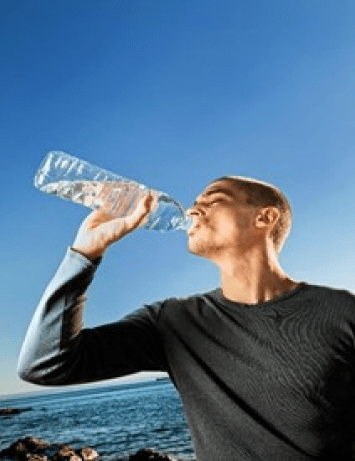
Avoiding dehydration
Dehydration may lead to a lack of tear production on the surface of the eyes. Staying hydrated by drinking plenty of water (8 to 10 glasses each day) throughout the day can help prevent dry eye from developing by ensuring sufficient production of tears.

Protecting the eyes in dry environments
Low humidity and windy environments can cause symptoms of dry eye through increased tear evaporation. Increasing the surrounding humidity by using a humidifier can help prevent dryness in the eyes, especially in dry environments. Wearing sunglasses or protective eyewear when going outside may also help reduce glare from the sun and reduce the exposure to dry winds, which may cause dry eye.
DISCLAIMER: THIS WEBSITE DOES NOT PROVIDE MEDICAL ADVICE
The information, including but not limited to, text, graphics, images and other material contained on this website are for informational purposes only. No material on this site is intended to be a substitute for professional medical advice, diagnosis or treatment. Always seek the advice of your physician or other qualified healthcare provider with any questions you may have regarding a medical condition or treatment and before undertaking a new healthcare regimen, and never disregard professional medical advice or delay in seeking it because of something you have read on this website.
References
[1] F. Stapleton et al., “TFOS DEWS II Epidemiology Report,” Ocul. Surf., vol. 15, no. 3, pp. 33 4–365, 2017, doi: https://doi.org/10.1016/j.jtos.2017.05.003
[2] M. McDonald, D. A. Patel, M. S. Keith, and S. J. Snedecor, “Economic and Humanistic Burden of Dry Eye Disease in Europe, North America, and Asia: A Systematic Literature Review,” Ocul. Surf., vol. 14, no. 2, pp. 144–167, 2016, doi: https://doi.org/10.1016/j.jtos.2015.11.002
[3] M. Yamada, Y. Mizuno, and C. Shigeyasu, “Impact of dry eye on work productivity.,” Clinicoecon. Outcomes Res., vol. 4, pp. 307–312, 2012, doi: 10.2147/CEOR.S36352
[4] J. P. Craig et al., “TFOS DEWS II Definition and Classification Report,” Ocul. Surf., vol. 15, no. 3, pp. 276–283, 2017, doi: https://doi.org/10.1016/j.jtos.2017.05.008
[5] de Paiva C. S. (2017). Effects of Aging in Dry Eye. International ophthalmology clinics, 57(2), 47–64. https://doi.org/10.1097/IIO.0000000000000170
[6] “Pediatric Dry Eye”, American Academy of Ophthalmology, 2021. [Online]. Available: https://www.aao.org/disease-review/pediatric-dry-eye. [Accessed: 09- Jul- 2021].
[7] M. Markoulli and S. Kolanu, “Contact lens wear and dry eyes: challenges and solutions,” Clin. Optom., vol. 9, pp. 41–48, Feb. 2017, doi: 10.2147/OPTO.S111130.
[8] N. Kasetsuwan, V. Satitpitakul, T. Changul, and S. Jariyakosol, “Incidence and Pattern of Dry Eye after Cataract Surgery,” PLoS One, vol. 8, no. 11, p. e78657, Nov. 2013.
[9] R. M. Shtein, “Post-LASIK dry eye,” Expert Rev. Ophthalmol., vol. 6, no. 5, pp. 575–582, Oct. 2011, doi: 10.1586/eop.11.56.
[10] “Dry Eye Syndrome questionnaires – EyeWiki”, Eyewiki.aao.org, 2021. [Online]. Available: https://eyewiki.aao.org/Dry_Eye_Syndrome_questionnaires. [Accessed: 08- Jul- 2021].
[11] R. L. Chalmers and C. G. Begley, “The Dry Eye Questionnaire 5 (DEQ-5): Use of a 5-Item Habitual Symptom Score to Discriminate Between Groups With Varying Self-Assessed Severity,” Invest. Ophthalmol. Vis. Sci., vol. 49, no. 13, p. 5851, May 2008.
[12] “Schirmer Test – an overview | ScienceDirect Topics”, Sciencedirect.com, 2021. [Online]. Available: https://www.sciencedirect.com/topics/medicine-and-dentistry/schirmer-test. [Accessed: 09- Jul- 2021].
[13] N. L. Lanza, F. Valenzuela, V. L. Perez, and A. Galor, “The Matrix Metalloproteinase 9 Point-of-Care Test in Dry Eye,” Ocul. Surf., vol. 14, no. 2, pp. 189–195, 2016, doi: https://doi.org/10.1016/j.jtos.2015.10.004.
[14] G. Giannaccare et al., “Efficacy of Omega-3 Fatty Acid Supplementation for Treatment of Dry Eye Disease: A Meta-Analysis of Randomized Clinical Trials.,” Cornea, vol. 38, no. 5, pp. 565–573, May 2019, doi: 10.1097/ICO.0000000000001884.
